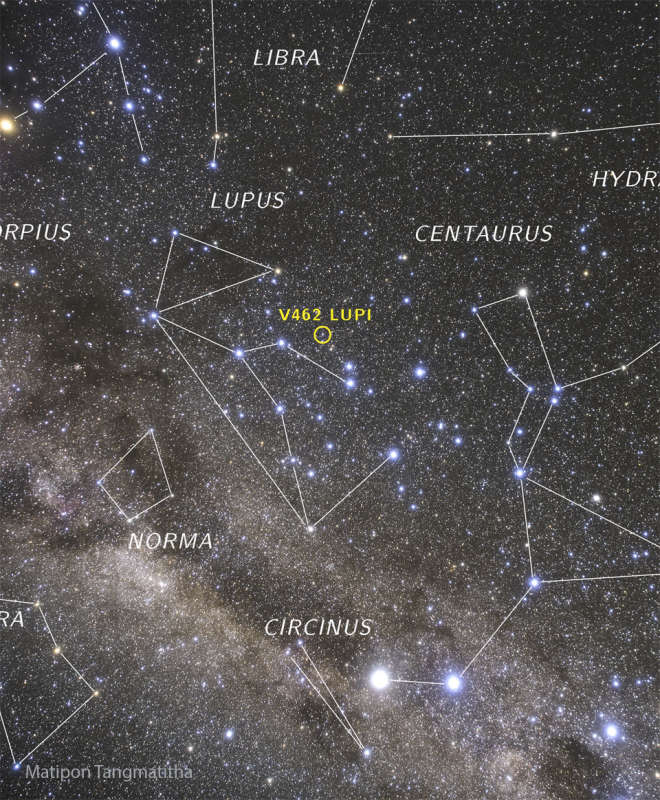
|
Credit & Copyright: Matipon Tangmatitham
(NARIT)
Explanation:
If you know where to look, you can see a thermonuclear explosion from a white dwarf
star.
Possibly two.
Such explosions are known as
novas
and the detonations
are currently faintly visible with the unaided eye in
Earth's southern hemisphere -- but are more easily seen with binoculars.
Pictured, Nova Lupi 2025 (V462 Lupi) was captured
toward the southern constellation of the Wolf
(Lupus)
last week near the central plane of our Milky Way galaxy.
Nova Lupi 2025
was originally discovered on June 12 and peaked in brightness about a week later.
Similarly,
Nova Velorum 2025,
toward the southern constellation of the Ship Sails
(Vela),
was discovered on June 25 and peaked a few days later.
A nova somewhere in our Galaxy
becomes briefly visible to the unaided eye only every year or two,
so it is quite unusual to have
two novas visible simultaneously.
Meanwhile,
humanity awaits even a different nova:
T Coronae Borealis,
which should become visible in northern skies and is expected to become even brighter.
|
January February March April May June July August September October November |
| ||||||||||||||||||||||||||||||||||||||||||||||||
NASA Web Site Statements, Warnings, and Disclaimers
NASA Official: Jay Norris. Specific rights apply.
A service of: LHEA at NASA / GSFC
& Michigan Tech. U.
Based on Astronomy Picture
Of the Day
Publications with keywords: nova
Publications with words: nova
See also:
